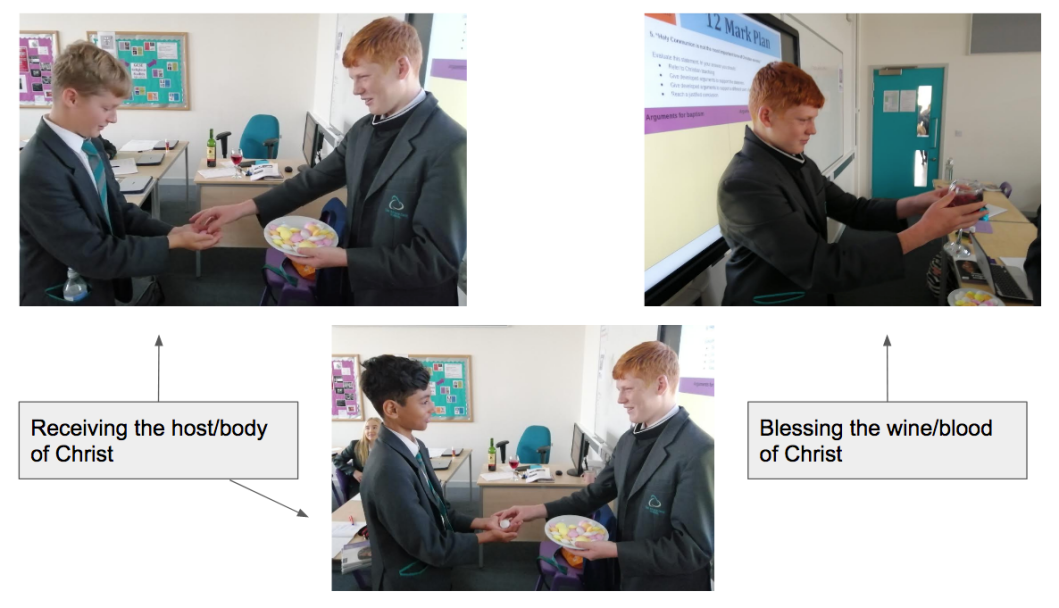First posted on Tales From the Reach on 22 June 2019
The Reach Free School has been exploring how we explain and convey knowledge to pupils throughout this Summer term. We have looked at concrete examples, dual coding and storytelling alongside other techniques and strategies.
However, another way to convey knowledge to pupils is through enacted narratives. In someways this technique builds on the idea of storytelling, but incorporates structured role play in order to tell or, rather, reenact the narrative/story being taught.
Essentially, enacted narratives are role plays. This means pupils have a role to act out and, during a small scenario or situation, they speak and act as if adopting the behaviours and motives of the character they are playing. This is straight forward. However, in an enacted narrative, the acting would be structured; following a set chronology of actions that are not spontaneous or ad-libbed.
Enacted narratives have various benefits for pupils’ comprehension of narratives and stories, such as:
- exploring real-life situations, which can develop empathy as pupils’ simulate reactions to other people’s feelings;
- actively engaging pupils in learning;
- allowing pupils to make connections between abstract ideas and the real world (see the example below) – enacted narratives can, therefore, be seen as concrete examples;
- enabling pupils to make a contribution to learning beyond putting pen-to-paper;
- arguably promoting a higher level of contextual/situational thinking.
I have used enacted narrative activities in Religious Education classes when teaching sacraments and similar rituals involved in religious worship, such as baptism, marriage ceremonies and Holy Communion (see below). Importantly, most religious rituals follow a narrative of some sort; this can be Biblical in origin, such as the Last Supper and Holy Communion, or purely liturgical (following a set pattern), which is evident in both infant baptism and marriage ceremonies in the Anglican and Roman Catholic churches.
As someone who has always been wary of unstructured activities in the classroom, especially where pupils prepare their own role plays etc., I find enacted narratives straight forward and specific in terms of structuring what pupils should do. Moreover, most of these situations are common in popular culture and prior to enacting the narrative pupils watch a clip (as well reading text etc.), in order understand the processes and speech involved in the ritual/narrative.
The example below is based on Holy Communion in the Anglican and Roman Catholic traditions. As pupils of various faiths take part, I use flying sauces (sweets) instead of alter bread and, of course, blackcurrant juice instead of wine. This means there can be no misinterpretation that pupils taking part are actually participating in a religious ritual. Nevertheless, enacting this way ensures they remember key aspects of the ritual/narrative.


My current Year 11s, just before their exams, said the Holy Communion lesson (illustrated above by my current Year 9s) was the lesson they could recall the most easily. Therefore, using enacted narratives to explain abstract religious narratives, which includes rituals that symbolised key aspects of religious belief, have been beneficial to my pupils. This teaching technique is well worth adding to the occasional lesson.
HOWEVER, you should consider the nature of your class. Role plays work better with some pupils than others. Also be wary of forcing pupils to participate, especially if they are extrovert; this could cause unnecessary conflict.
Further reading
Developing Ideas through Play and Role-Play (CLPE)
Storytelling, Songs, Role-Play and Drama (OUP/TESS India)
Sherrin, D. (2015). The Classes They Remember (Abingdon: Rutledge).